
At Il Cinema Ritrovato, the annual film festival in Bologna devoted to restorations and rediscoveries, you can start the day in 1920s Paris, stop off in Mexico before lunch, spend the afternoon hopscotching from India to China to Rome in its mid-fifties glory, and finish the day in old Seville by way of Hollywood, U.S.A. The festival’s programmers explicitly embrace the idea of cinema as both a time machine and a “space machine,” offering such itineraries as a whirlwind tour of world cinema one hundred years ago, in 1918, or a sojourn in the Soviet Union circa 1934. But, as I found when I attended for the first time this past June, the festival’s setting works powerfully against the experience of movies as a disembodied escape into another place and time. Bologna itself is too insistently beguiling, too distinctive in character and rich in sensual pleasures, and—during the festival—too packed with fellow travelers, to fade into the background.
It is a city the color of a ripe peach. The stucco buildings in shades of pink, ochre, and orange are warm and sweet to the eye; everywhere you look are red-tiled roofs, medieval towers, and elegant arcades. In the compact, ancient center, almost every street of any size is lined with arching covered walkways. It is hard to stroll through these colonnades without a sense of gratitude, not only for the deep shade and cool stone that shelter you from the blazing heat, but for the delicately chiseled vaulting and ornamented columns above, and the mosaics of black, cream, and russet marble under your feet, which make a trip to the pharmacy feel like a dignified procession. The torri, glowering proto-skyscrapers of stone pierced with tiny arrow-slits, add a hint of mystery to what otherwise feels like an open and inviting place. There are wide piazzas, pocket-size courtyards, and tiny medieval alleys, some lined with Vespas, others bustling with outdoor trattorias and food shops—cornucopias of giant, mottled hams; huge chunks of cheese; vegetables and fruits so gorgeous they look like they tumbled out of a Caravaggio painting. One of Bologna’s nicknames is “La Grassa” (the Fat), for its devotion to food; it is the birthplace of tortellini, as well as, of course, giving its name to “baloney.” Another nickname is “La Rossa” (the Red), for its history of fiery left-wing politics, still going strong if the Antifa mottoes scrawled on those peach-colored walls are any indication. Finally, Bologna is known as “La Dotta” (the Learned), because it hosts the oldest university in Europe. It is also home to the Cineteca di Bologna and L’Immagine Ritrovata, one of the world’s foremost film restoration labs, which has hosted the festival for the past thirty-two years. Fat, red, and learned is very likely how a pale-skinned American visitor will feel after ten days of eating, exploring the sun-struck streets, and sampling the mind-boggling array of films being offered.
“As you dip into various series, new threads form, shaped by individual tastes and coincidental echoes.”

Some of the festival’s venues compete with the movies screened in them. The Piazza Maggiore, ringed by cathedrals and palazzos and flooded, some nights, by as many as seven thousand people, is a magnificent place to be, perhaps not an ideal environment in which to pay close attention to a movie. In the Piazzetta Pasolini, the courtyard of the Cineteca’s Lumière complex, films are shown with a carbon arc projector, itself a spectacle: a coil of smoke rises in a beam of light from the machine, accompanied by a loud whir like that of a giant insect. One steamy night, a full-throated Neapolitan folk band drowned out this noise, accompanying Napoli sirena delle canzoni (1929), a dreamlike jumble of images that seemed as liquid, flickering, and archaic as the light source that projected it. In the Cantiere Modernissimo, a 1915 underground theater being renovated by the Cineteca, the strange atmosphere of the dusty, clammy, cave-like space perfectly suited the 1918 spy thriller serial Wolves of Kultur, with its hidden rooms and secret passageways.
But most of the screenings take place in ordinary movie theaters that—aside from dodgy air conditioning and good espresso at the concession stands—could be anywhere. Why then do the films seem to resonate with a special intensity? It is partly to do with the overall festival environment: the colors and tastes and sights, the excited hum of so many people talking about movies, all leave you keyed up and wide open, ready to be ravished. More than that, though, the films are changed by their proximity to others in the program; they start to rhyme across eras, languages, and styles. The program is structured in “threads,” which in 2018 included spotlights on the directors John M. Stahl and Luciano Emmer, Fox Films from the early sound era, Chinese cinema from the forties, and a celebration of Marcello Mastroianni, who graced the ubiquitous festival posters. With some eight thousand attendees and more than five hundred movies being screened, up to five at a time, the festival is inevitably a different experience for each person. As you dip into various series, new threads form, shaped by individual tastes and coincidental echoes.
Some of the connections are tenuous or accidental: it was purely coincidence, but a striking one, that on the same day I saw two films in which fathers unintentionally kill their children (to avoid spoilers, I won’t say which they were). Other connections are obvious and probably intentional. For instance, it was fascinating to see Herbert Kline’s documentary Lights Out in Europe (1940) a week after being stunned by Andre De Toth’s None Shall Escape (1944). The power of the latter’s indictment of Nazi atrocities comes not just from its stark brutality (bolstered by the Hungarian De Toth’s experience as a newsreel cameraman covering the German conquest of Poland) but from its success at weaving its message into a well-crafted Hollywood melodrama, which credibly analyzes the character of its Nazi villain, rather than making him a two-dimensional monster. (He is brilliantly played by Alexander Knox, soon to be blacklisted along with co-star Marsha Hunt and writer Lester Coles.) Kline’s film includes riveting footage of London preparing for the blitz—gas masks, sandbags, children being evacuated with paper labels around their necks—and graphic images of Polish civilians wounded, dying, or numbly picking through the charred cinders of their homes. The narration, read by Frederic March, is ardently anti-war; neither isolationist nor pushing for American involvement, it focuses grimly on war’s victims. It depicts the eerie moment when the world was waiting for the war to begin, while None Shall Escape, made in the middle of that war, is daringly set after an Allied victory, prophesying the Nuremberg trials. Those who saw the movie on its release cannot have experienced it as we do now; we have the assurance that the Nazis were, indeed, defeated, but we also know how chillingly accurate Knox’s final speech is, when he promises that his kind will always be back.

A handful of my favorite discoveries from the festival illustrates the kind of thematic and tonal thread that can link films from different eras and places. They were, at first glance, films about hard physical labor and abject poverty: the miseries of plantation workers in remote jungles of northern Argentina in Prisioneros de la tierra (Prisoners of the Earth, 1939); the hot, black, stifling hell of coal mines in La Ragazza in Vetrina (The Woman in the Window, 1961); the tough routines of barge-captains struggling to keep their old ships afloat on the Seine in Les amants de Brasmort (The Lovers of Brasmort, 1951); the daily battle against cold and hunger for homeless victims of the Depression in One More Spring (1935). But what struck me even more is that they were all films of great lyricism, in which bleak reality is broken up by moments of grace, wit, euphoria, musical solace, and romantic abandon.
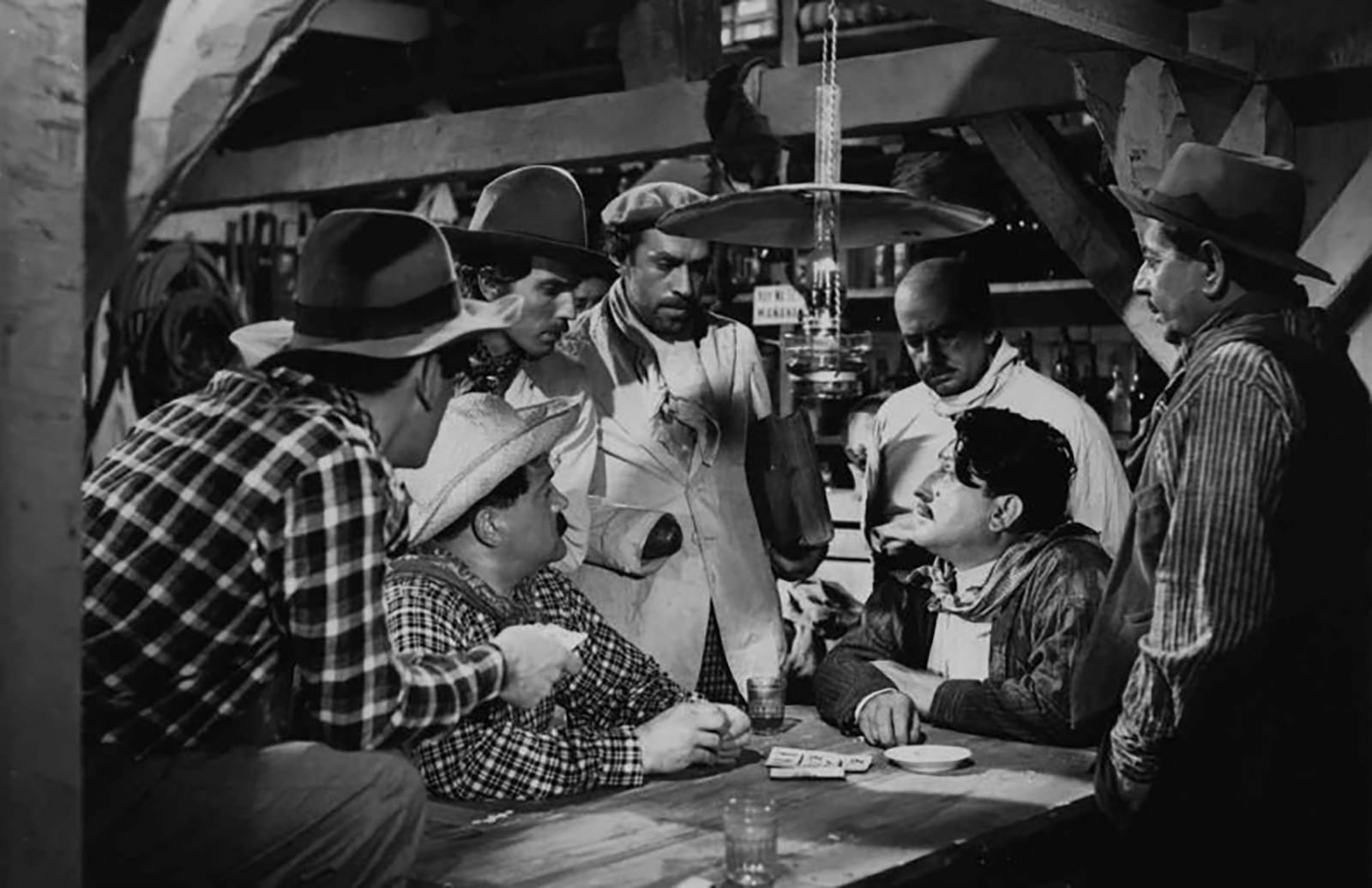
Mario Soffici’s Prisoners of the Earth has the sweaty vividness of a fever dream. It opens with a dark, fleshy close-up of a man and woman kissing; the man is the protagonist, Esteban Podeley (Àngel Magaña), a rebellious laborer about to set off on a work contract, and the woman is a prostitute who is never seen again. On the steamer traveling up river to the plantation, he is tied to a post a punishment for insubordination, while the other workers idle on the decks singing and strumming guitars. Also aboard is an alcoholic doctor, enlisted to treat the men who drop like flies from jungle diseases, and his saintly daughter Andrea (Elisa Galvé), who becomes an object of desire and contention for Podeley and the foreman Köhner (Francisco Petrone). Though the film protests the exploitation of the Mensù (laborers), effectively enslaved by trumped-up debts to their employers, it is extraordinary for its refusal to idealize the victims or demonize the oppressors. Köhner is a ruthless, whip-wielding tyrant, but also a desperately lonely outsider who cherishes a worn Beethoven record he plays on a wind-up gramophone. Podeley is brave and charismatic, but his ultimate vengeance against his enemy is an act of such prolonged and sadistic cruelty that the balance of sympathy shifts between the men. Jorge Luis Borges, an admirer of the film, remarked that, “In other films, it is the horrible characters who commit horrible acts; in de la tierra, the hero does so, giving the story an almost intolerable effectiveness.” But the most horrible act of all is committed by the doctor in a fit of delirium tremens, a nightmarish scene that feels at once shocking and inevitable. Shot on location, the film is a raw and very tactile evocation of its setting, shaped by the ballad-like, tragic arc of its story.
Like the Mensù, the Italian migrants who toil in Dutch coal mines in Luciano Emmer’s La Ragazza in Vetrina use a culture of bravado and rowdy debauchery to cope with the danger and wretchedness of their work. (Both these films were restored in 2018 by the Cineteca di Bologna, the former in partnership with The Film Foundation’s World Cinema Project and the Museo del Cine Pablo Ducrós Hicken; the latter with Compass Films.) Ragazza is a curiously structured film, falling into two very different parts, unequal in length and, inversely, in power. It opens with a group of new arrivals getting off a train and making their way through a drab, sooty landscape to the inn where the Italians live, crowded together in a small back room. Just minutes into the film, they climb into a cage elevator and disappear into the earth. The visceral realism of the mining scenes is unmatched, and not recommended for the claustrophobic: the camera crowds in with the men at the narrow head of the tunnel, drilling into the coal face, all teeth-rattling noise, sweat, dust, grime, heat, and darkness. When one of the film’s stars, the great Lino Ventura, appears, he is just another coal-blackened mug, hard to spot at first. Then a tunnel caves in, killing one of the newcomers, crushing the legs of a black miner, and trapping Federico (Ventura) and Vincenzo (Bernard Fresson). As days crawl by entombed in rock, they first joke and sing (belting out “Besame Mucho”) as they wait for rescue, then gradually slip into semi-conscious hopelessness.
They don’t die, of course—this whole section is essentially a prologue to the main film, in which the two survivors set off for Amsterdam intending to pick up a couple of prostitutes for a weekend by the seashore. But the scenes underground are so gripping that what follows can’t help but be something of an anticlimax, despite the colorfully seedy settings of jazz clubs and dive bars. As the guys window-shop in the red light district, the girls trapped behind plate-glass, exhibiting themselves as commodities for sale, are perhaps equivalent to the men trapped in the mines where they earn money by gambling with their lives. The film treats matter-of-factly the men’s crass objectification of the women, as the boorish, overconfident Federico tries to show the ropes to the more diffident and sensitive Vincenzo. Once they pair off, it explores the ups and downs of these temporary, transactional relationships, Federico bickering with his hot-tempered girlfriend Chanel (Magali Noël) and Vincenzo tentatively romancing the haughty, ravishing Else (Marina Vlady, who was on hand to introduce the screening in Bologna). It is not surprising that La Ragazza in Vetrina fell afoul of censors on its release—an experience that contributed to Emmer’s abandoning cinema to work exclusively in television. In program notes, Emiliano Morreale suggests that it was not so much raciness that got the film in trouble but the depiction of Italians forced by lack of opportunities to emigrate and work in such harsh conditions.
 Les amants de Brasmort
Les amants de BrasmortThere is nothing overtly political in the story, however; none of the characters complain about their lot, and the film merely observes and accepts them and their world. Marcello Pagliero’s Les amants de Brasmort, on the other hand, is a love story with very clear villains and heroes, blending the flavor of poetic realism with the satisfactions of old-fashioned melodrama. It is impossible not to think of Jean Vigo’s L’Atalante (1934) as soon as you see the low-slung barges, the foggy riverbanks lined with industrial docks and skeletal poplar trees, the men in their fisherman’s caps and chunky sweaters and the women keeping house on the decks. The story pits scrappy, independent captains of freight barges against an underhanded campaign to force them into a corporate fleet and to drive out older, wooden barges in favor of new iron models. The condemned ships wind up in Brasmort, a barge cemetery in a marshy backwater, where a few defiant old-timers still live on their boats, surrounded by the rotting, half-sunken ruins of others. This forlorn, mist-shrouded spot is also a refuge, where at one point the hero Jean Michaut (Franck Villard) cleverly hides a ship to save it from being repossessed by creditors.
The riverine conflict, which escalates to the theft by night of a barge from a dry dock and a race from Paris to Rouen to deliver a cargo of coal, is entangled with a romance between Jean and Monique (Nicole Courcel), the daughter of Jean’s enemy. Feuding families, class conflict, jealousy, betrayal, and erotic yearning play out amid gritty backdrops of cranes, junkyards, locks, and weedy riverbanks grazed by goats and chickens. There are exhilarating moments, as when Monique and her worn, embittered mother conspire to sabotage her father, whose treachery against his own class is compounded by infidelity to his wife. This turning point is marked by the film’s most romantic image, as two barges pass on the river, one carrying Jean and the other Monique; the lovers walk along the moving decks to stay in sight as long as possible, gazing at each other across the water that separates them. Behind Monique, trees on the bank are white with blossoms, the first sign of spring in what has been a gray, wintry landscape.

Italian neorealism, which flavors the work of both Emmer and Pagliero, was a rebellion against the style of studio gloss and luxurious fantasy that was exported by Hollywood and imitated around the world. It can be startling for audiences today to discover that, a decade before the birth of neorealism, Hollywood itself turned out blunt and candid treatments of poverty during the Great Depression. The toughest films mostly pre-date the Production Code crackdown of 1934, so it is doubly surprising to see Henry King’s One More Spring (1935), which was filmed as the Depression made a crushing, post-FDR downturn, and as the Fox Film Corporation tottered on its last legs before merging with Darryl Zanuck’s Twentieth Century Pictures. It is a delicate film, with the tenderness and humanism that King brought to his best work (Tol’able David [1921], State Fair [1933], Margie [1946]), but it is also unflinching in its portrait of desperation, and filled with gallows humor—as when two unemployed young women, in the knockout opening scene, debate the merits of auctions and funerals as opportunities to get off the street and into a warm room. Elizabeth Cheney (Janet Gaynor) admits that she spends most of her nights on the subway, quipping, “I always liked to travel.” Her meet-cute with an equally homeless Jaret Otkar (Warner Baxter) comes when they are both trying to steal food from the Central Park Casino. The casual and constant way that people talk about hunger in Depression-era American movies is always a shock; it was assumed that mainstream audiences could identify with an all-consuming obsession with finding the next meal.
Otkar has set up light housekeeping with a comically egotistical violinist named Morris Rosenberg (Walter Woolf King). In an indelibly surreal touch, they carry an ornate, French-empire bed—all that is left of Otkar’s failed antiques business—into the park and sleep under the trees. They are taken under the wing of a guardian angel, the street-cleaner Sweeney (Roger Imhof), who allows them to live in his tool shed in return for violin lessons from the reluctant Rosenberg. Soon Elizabeth joins them, and the three share not only a room but a bed—she curled at the foot like a puppy—a touch that remarkably escaped the censors’ wrath, along with a plot turn in which Otkar believes that Elizabeth has sold herself to get money for medicine. Perhaps even the dirty-minded Hays Office could appreciate the purity of the film’s vision, which is rooted in the simple kindness that knits this makeshift community, whose members bicker and whine, but support each other without question. The balance of realism and fantasy is lost in a very Hollywood ending, but one wants to see these characters rewarded for their durable humanity.
An ability to put relationships onscreen that generate unforced tenderness, that can make you cry without making you feel manipulated, is a crowning gift of John M. Stahl, whose melodramas cut all the deeper for their restraint and clean, understated style. To my list of movies about hard work, poverty, and love, I might even add his When Tomorrow Comes (1939), made the same year as Leo McCarey’s Love Affair and starring the same star-crossed pair of lovers, Irene Dunne and Charles Boyer. Though its backlot recreation of the Lower East Side piers and tenements on a hot summer night is laughably clean and air-conditioned, the film is remarkable for its sympathetic depiction of a waitress’ strike (given the Hollywood studios’ notoriously hostility to organized labor), complete with union meetings in which the women sing “Solidarity Forever” and Dunne gives a rousing speech that convinces her fellow waitresses to walk out. That’s before she weathers a hurricane in the company of a wealthy classical pianist who is unhappily married to a woman he can’t leave. Stahl was one of the few directors who could take this kind of schmaltzy plot and somehow make its absurdities unimportant by homing in on the authentic feeling and credible behavior animating its core relationships.

It was clear, from conversations I overheard in lines outside theaters and in sidewalk restaurants, that Stahl was one of the major discoveries of the festival for many people. Discovering, finding, regaining, meeting again—all meanings encompassed by the word ritrovato—is basic to the experience in Bologna. On the first day of the festival I was thrilled to re-encounter Jean Grémillon’s enigmatic Daïnah la Métisse (1931), a dazzlingly stylish film set aboard an ocean liner afloat on a soundtrack of throbbing, minor-key jazz. (Some of the film’s elliptical, mysterious quality comes from its being drastically cut by censors; it screened as part of the series, “Censored, Recovered, Restored.”) The film’s most memorable scene is of a masked ball at which the ship’s white passengers wear grotesque masks that make them look like scabrous caricatures by George Grosz, while the gorgeous mixed-race Daïnah (Laurence Clavius) wears a strange wire mask that is at once exotically alluring and sinister, turning her into both a warrior and a prisoner. An object of lust for the white men aboard, she basks in their attention while shunning her darker-skinned black husband; but she also brushes off the mechanical revolutions of the foxtrot to dance alone, ecstatically, to the African-American rhythms of “Happy Feet.”
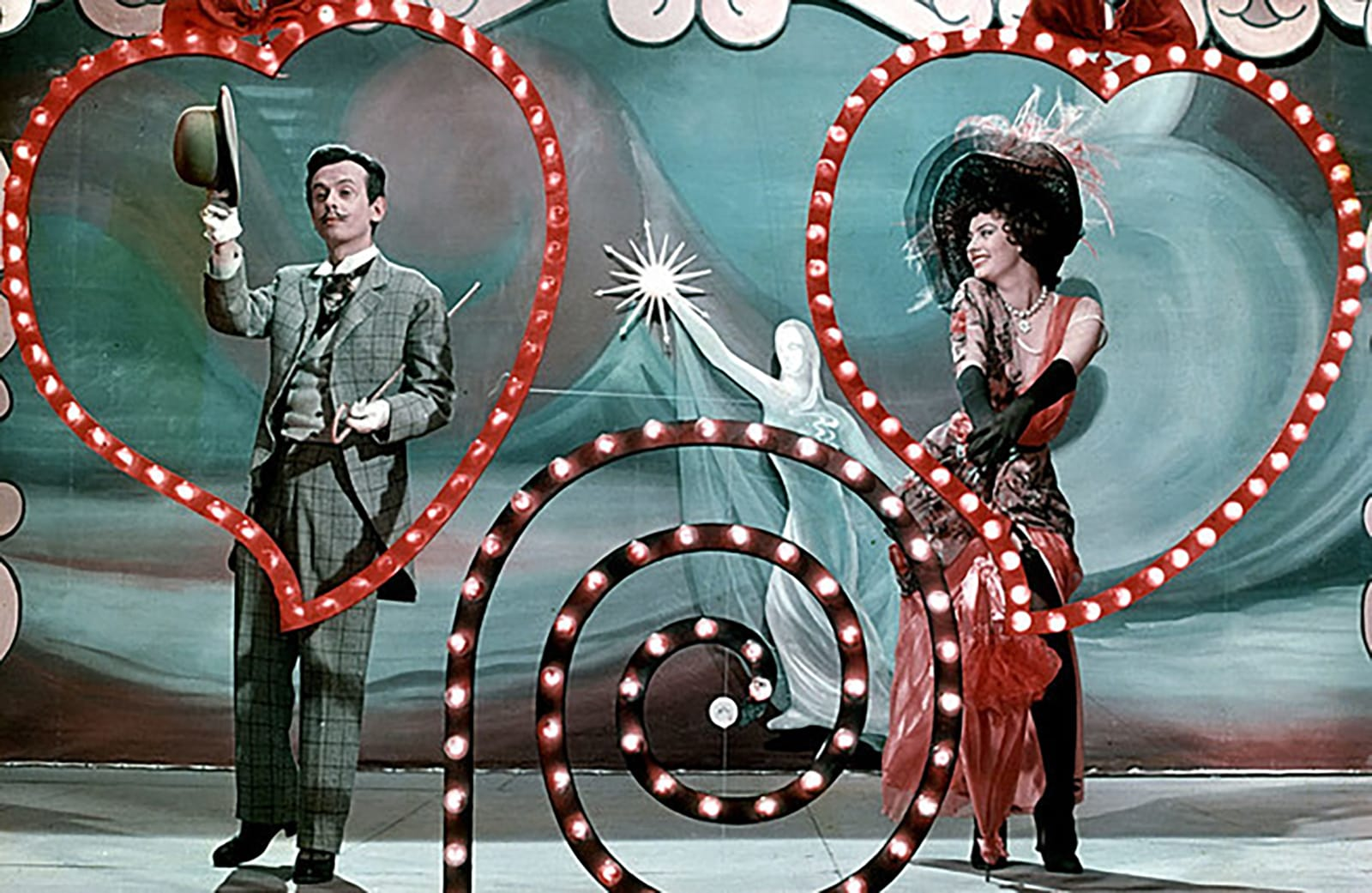
Music and dance flowed through many films that radically differed from classical Hollywood musicals. Ettore Giannini’s Carosello napoletano (1953), newly restored to its saturated Technicolor glory, recalls Powell and Pressburger’s experiment with the “composed film” in Tales of Hoffmann (1951), but there is nothing else quite like this ode to the resilience of Neapolitan culture and songs, which swirls fluidly through the centuries, taking in poverty and wars and violence as well as romance and frivolity. The most touching, and surprising, moment comes in a segment devoted to the commedia dell’arte, when an actor portraying the everyman-scallywag Pulcinella dies on stage. Removing his black, hook-nosed mask, he reveals the face of the legendary Russian dancer Léonide Massine, who choreographed the film—and who for many cinephiles will always be the shoemaker in the ballet centerpiece of Powell and Pressburger’s masterpiece The Red Shoes (1948).
Few films have ever astonished me more on first viewing than another standout this year, Emilio Fernandez’s explosive Victimas del pecado (Victims of Sin, 1951). This was my introduction to the cabaretera genre, a cycle of Mexican melodramas set in the sordid, neon-smeared underworld of nightclubs and crime, and it is gobsmacking from the get-go. The earthy, magnetic star Ninón Sevilla burns up the floor with percussive, incendiary Afro-Cuban dancing, when she is not rescuing a baby abandoned in a trash can; battling vile, zoot-suited pachuco pimps; nobly enduring degradation as a prostitute and prison inmate; or tenderly mothering her adopted child. The cinematography, by the poetic virtuoso Gabriel Figueroa, is classically noir—all smoky, glistening shadows—but the film is in a kind of emotional 3D, flying right at your face and leaving you stunned, marveling, “Who knew this existed?”
Victims of Sin is thus a perfect pick for Il Cinema Ritrovato, an event that has nothing to do with the anxious desire, which drives many film festivals, to be the first to see something new. Instead, it celebrates the joy of finding something that has been lost, forgotten, or simply waiting to be encountered. These films have been here all the time. What took us so long?
More: Features
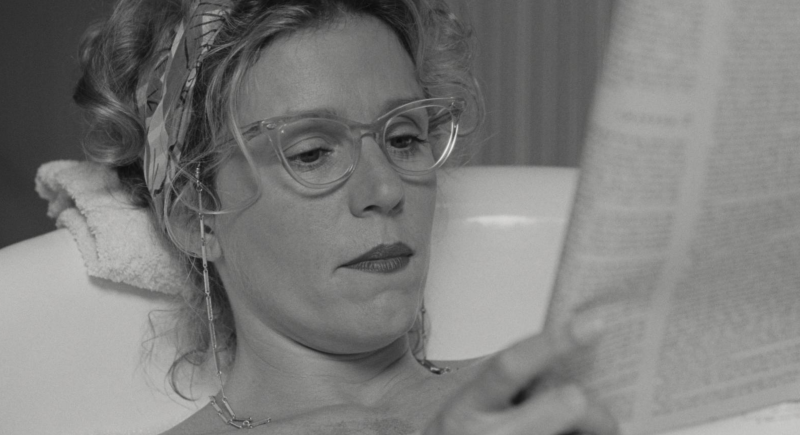
A Year’s Worth of Essential Reading
As we come to the end of 2025, we’re looking back at some of the essays and interviews we’ve shared with you over the past year.
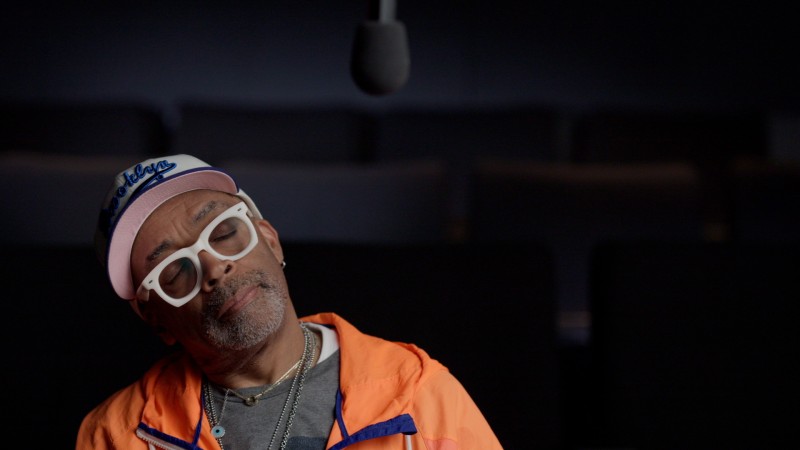
Room Tone 2025
Celebrate the holiday season with this special treat from our production team.

Dying Worlds: Adoor Gopalakrishnan’s Dramas of Cosmic Disorder
The director of Rat Trap and Monologue was an uncompromising artist who helped establish the Indian state of Kerala as a hub of bold political filmmaking.
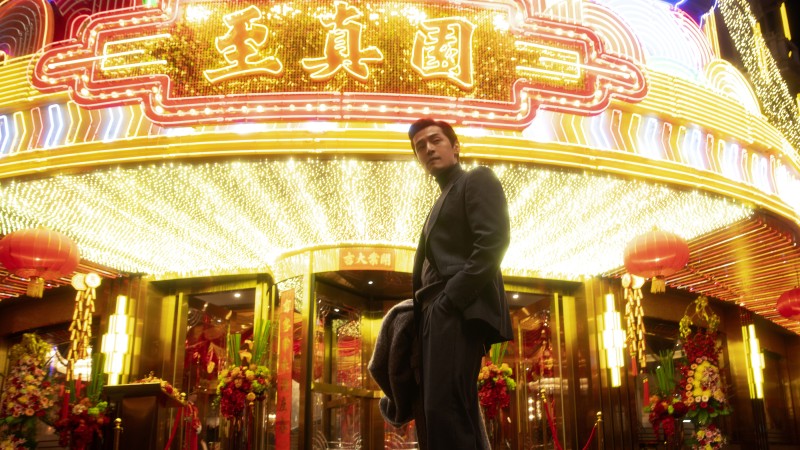
Blossoms Shanghai: An Introduction
Beginning on November 24, the Criterion Channel will exclusively premiere the long-awaited television series from visionary director Wong Kar Wai.